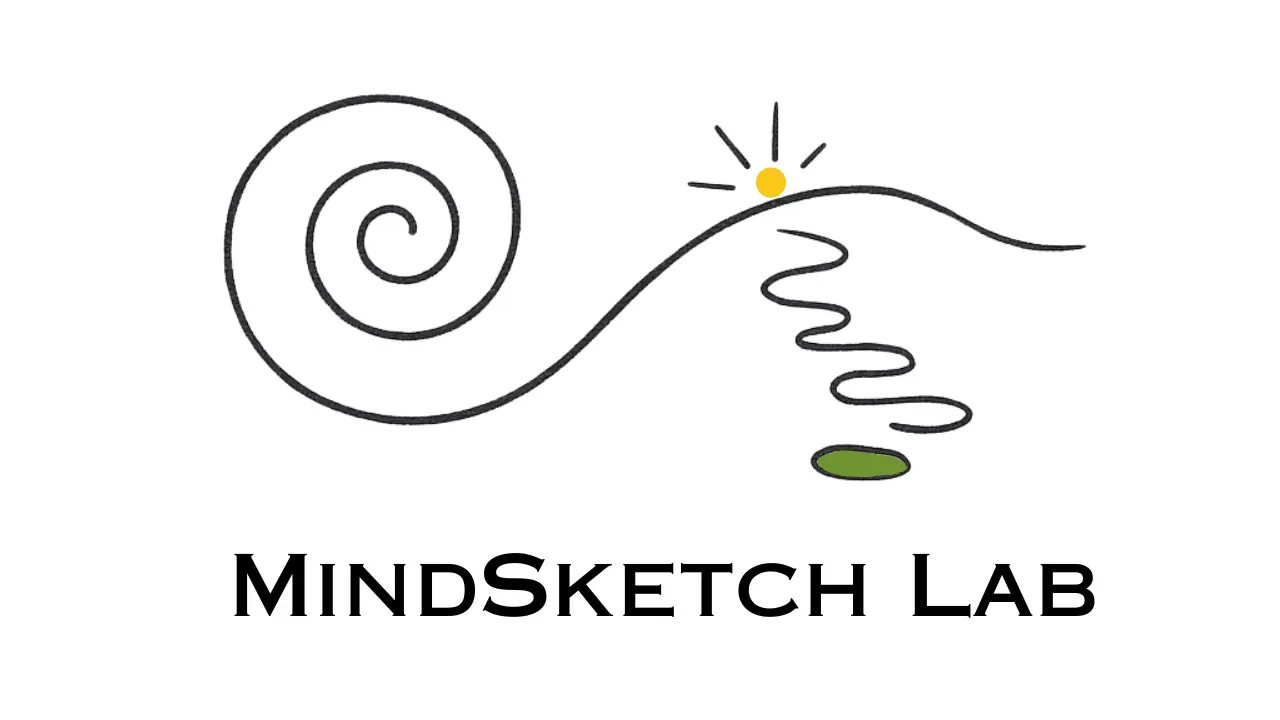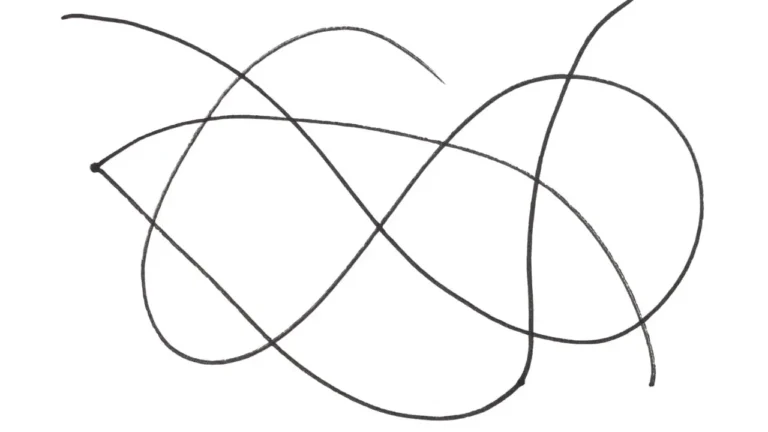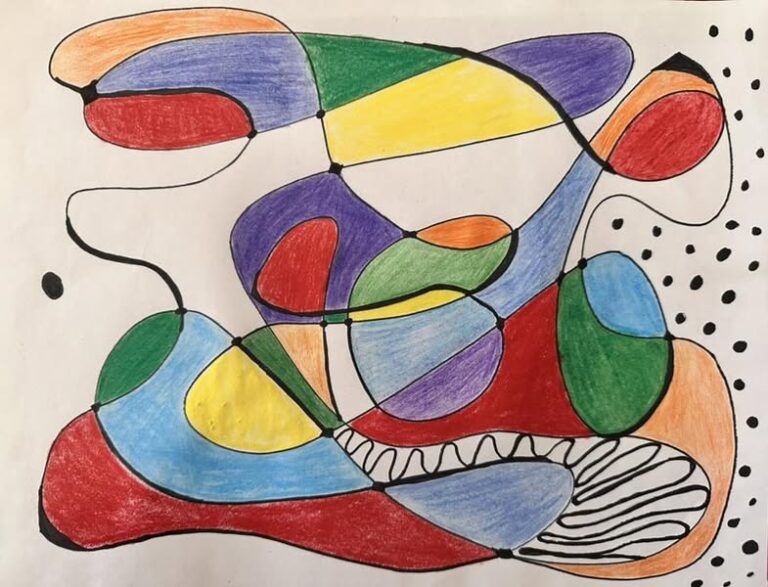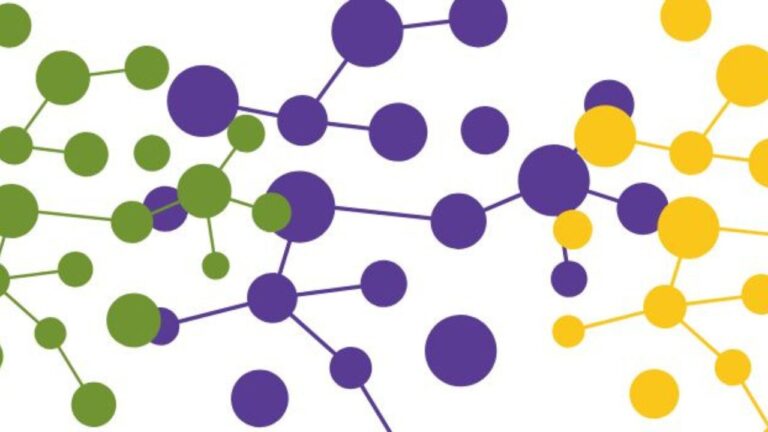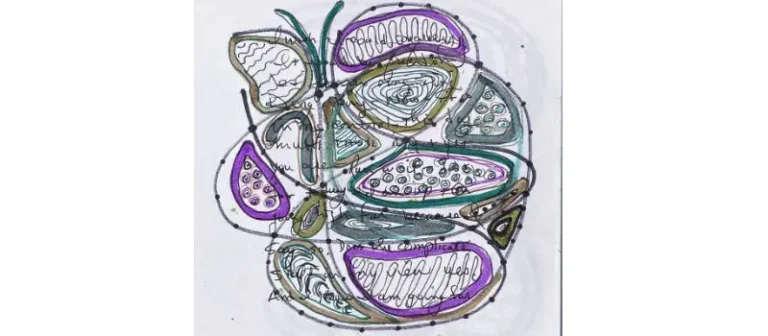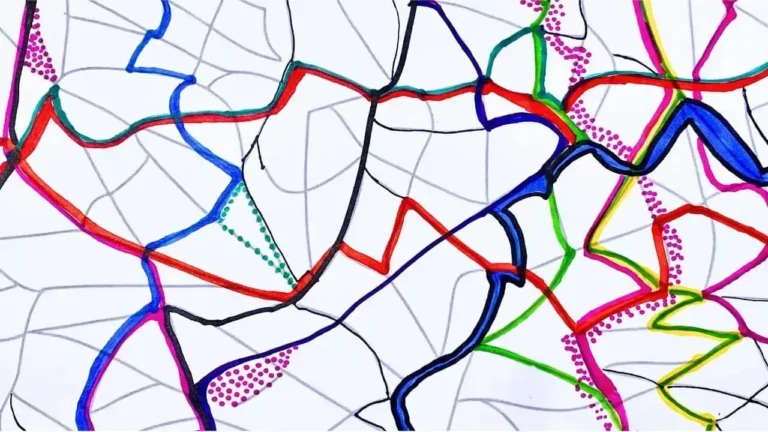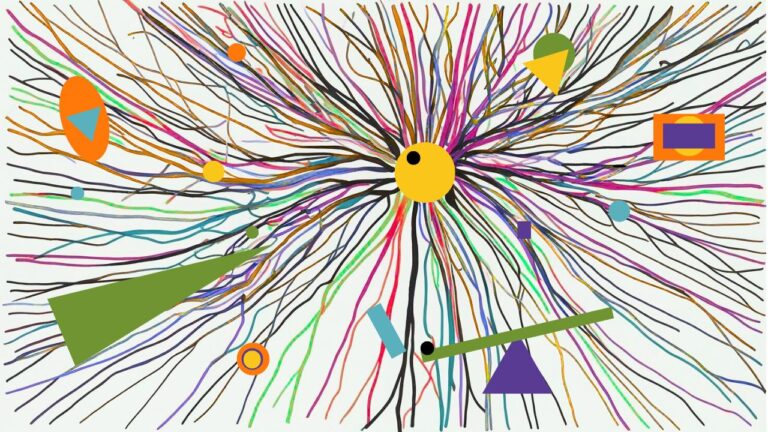Neurographic Art and Art Journaling | Understanding the Difference
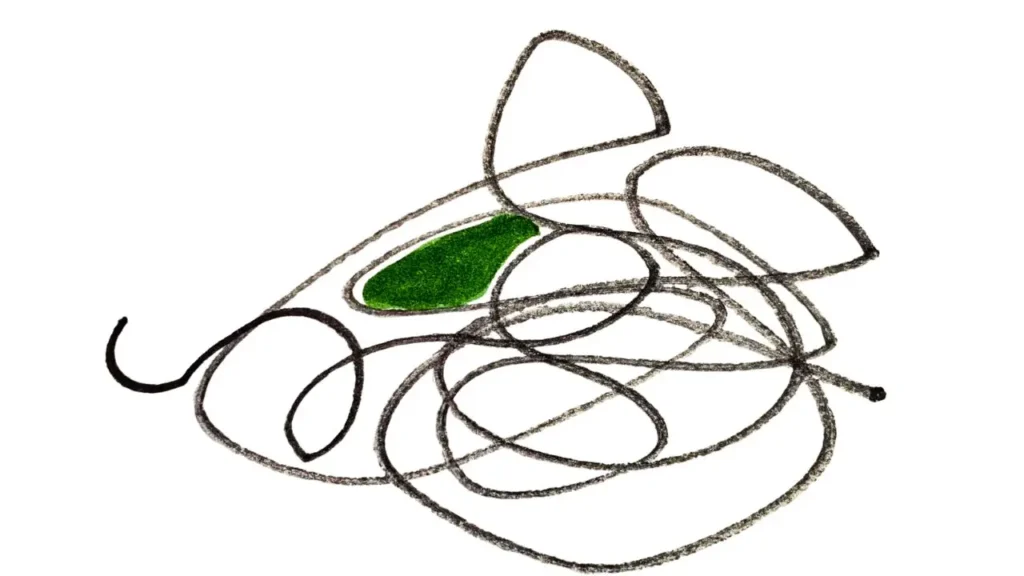
Neurographic art and art journaling are two creative ways to work through thoughts and emotions. In other words when my head is ready to explode I pick up a pen! Each method has its place, lately I have been combing writing and drawing.
- Neurographic art (line drawing) and journaling (writing) both reduce stress and boost clarity.
- Drawing lines helps when your thoughts race or you feel tense.
- Journaling works best for planning, organizing options, or finding your next step.
- A five-minute routine combining both methods is enough to reset your mind and make decisions.
- Consistency is more important than technique or talent.

Neurographic Art | Quick Calm for a Busy Brain
Neurographic art is simple. No artistic skills are necessary. Just stopping what I am doing that may be frustrating or distracting me and picking up a pen and sketch pad or journal calms me.
National Library of Medicine has some interesting things to say on this topic.
Try this – put a pen to paper with the idea of drawing a curvy line and let your line wander on the page.
Notice where the lines intersect, round the corners into smooth curves. This action reduces physical tension and tells your nervous system to relax. This is not woo- woo, hocus pocus. This is based on the neuroplasticity of our brains.
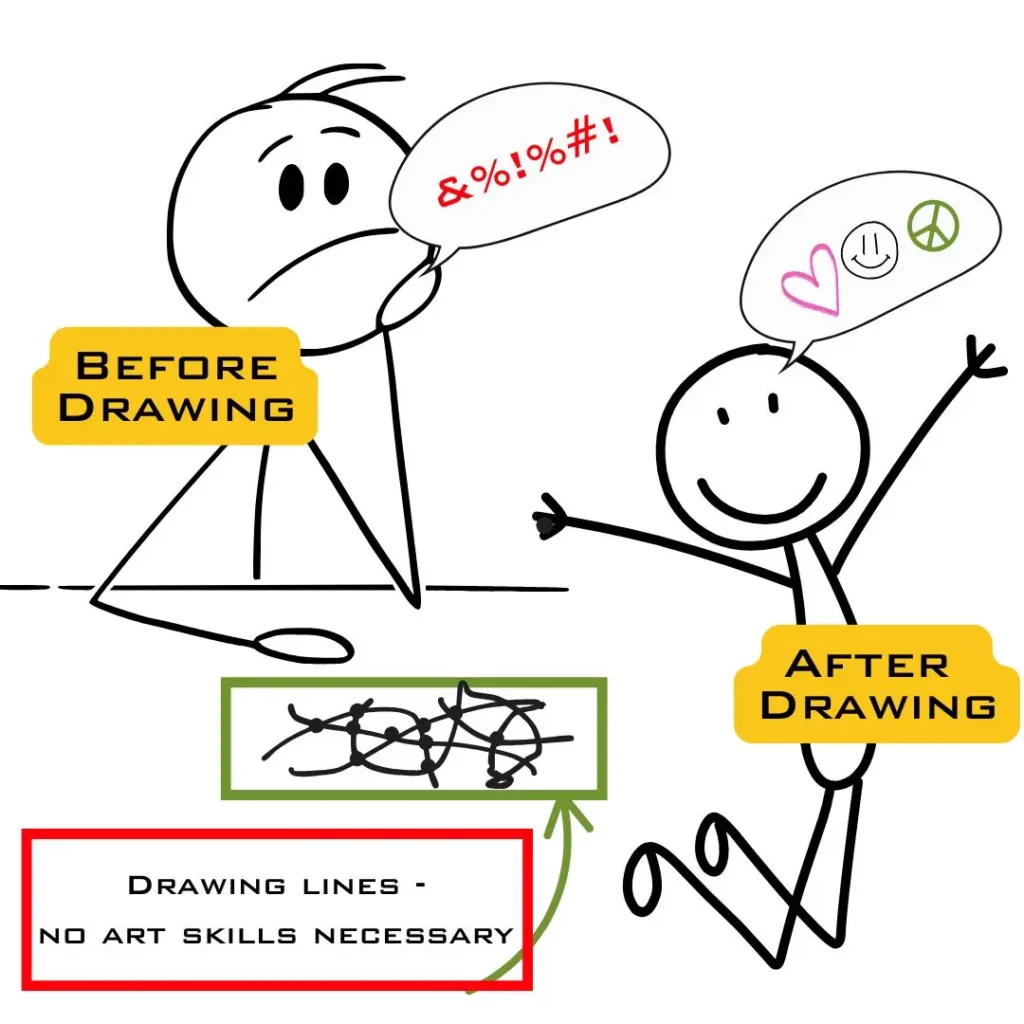
Best used for:
- Racing or looping thoughts
- Physical tension (jaw clenching, shoulder tightness)
- Overwhelm or decision fatigue
How to Do It (2 Minutes):
- Put pen to paper and draw a free curvy line, crossing it several times.
- Round each intersection to create smooth curves.
- Breathe out slowly as you draw.
I practice breathing 4-7-8. 4 breaths in, hold for 7 counts, and 8 counts out.
The American Heart Association has very good information about all aspects of breathing
Most people notice their breathing slows and muscles relax within two minutes.
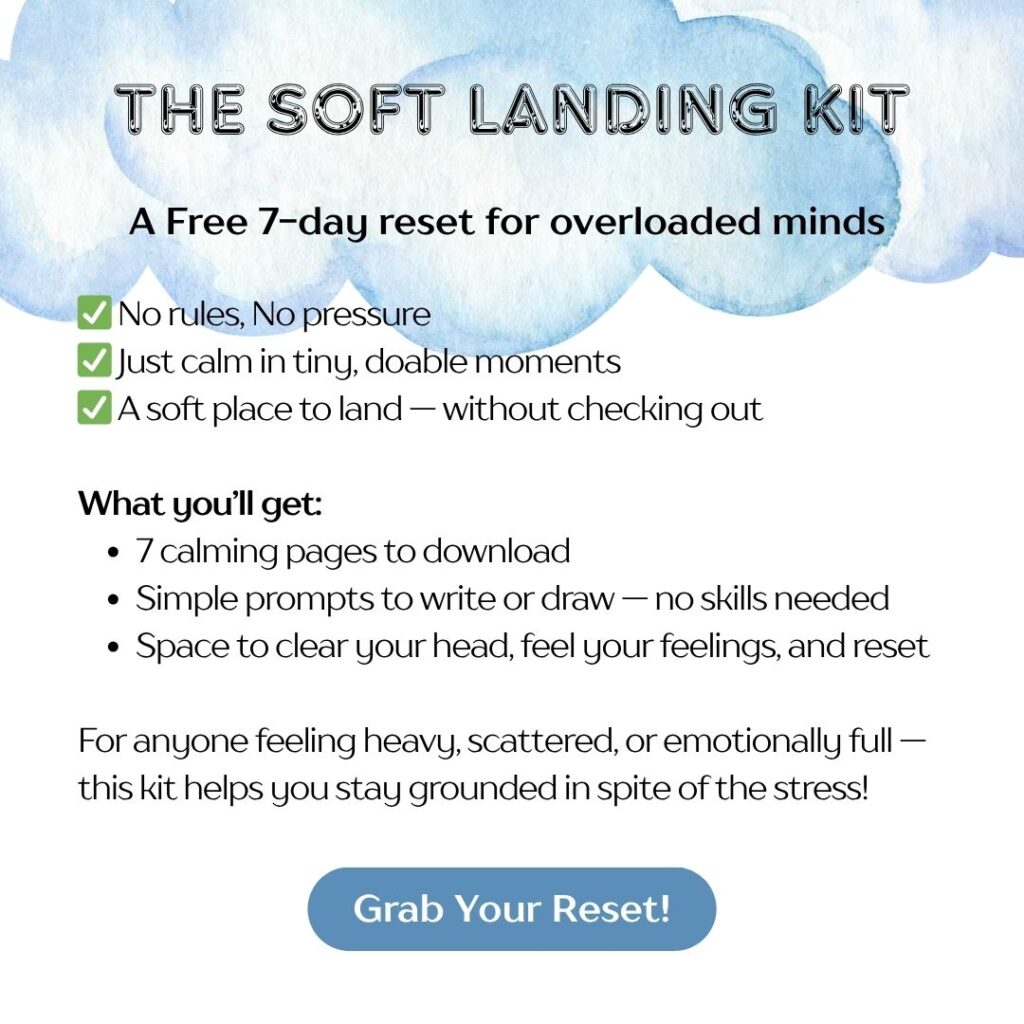
Is Neurographic Art Scientifically Proven?
Neurographic Art is still a pretty new expressive technique, and while there aren’t yet large-scale trials specifically for it, there is growing evidence that what it taps into — meditative drawing, mindfulness, art therapy, and creativity do have measurable benefits.
For example, institutions like Northwestern Medicine have reported how neurographic art helps people reduce stress and anxiety, “turn off inner chatter,” and feel calmer through visual and mindful practices.
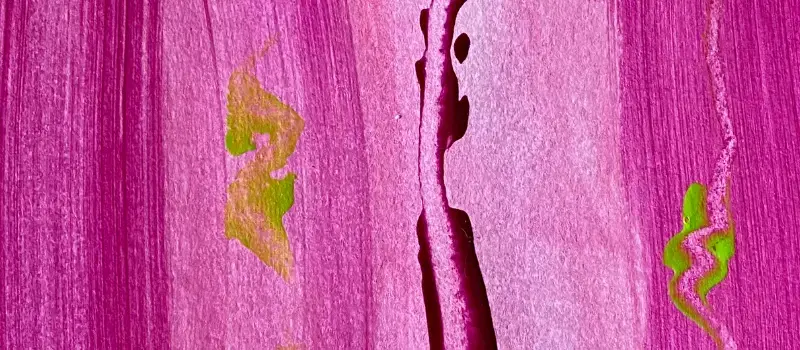
The National Library of Medicine has concluded studies in art therapy and neuroaesthetics show changes in brain activity and emotion regulation when people engage in creative expression.
And Frontiers in Psychiatry report that stressed out college students find reduced anxiety after engaging in an art therapy practices.
All I know for sure is before I started practicing neurographic art the only thing that could come close to calming me down was the ocean or when I am in my studio melting glass. I am a glass artist.
“Neurographic art is a powerful tool for calming a busy mind, but it’s not meant to do all the heavy lifting. If worry or anxiety feels constant or unmanageable, that’s the moment to reach out for extra support from a professional who can walk alongside you.”
2-Minute Mini-Neurographic Art Drawing Exercise Summary
- Put pen to paper. Let your line wander. Cross it a few times.
- Wherever lines intersect, round the corners into smooth curves.
- Breathe out longer than you breathe in while you do it.
- Stop after two minutes and notice: shoulders lower? Breathing easier? Good—that’s the point.
Journaling | Clear Out Mental Clutter
Journaling is writing your thoughts down fast, without editing or worrying about neatness. Putting worries or questions on paper reduces mental load and brings clarity.
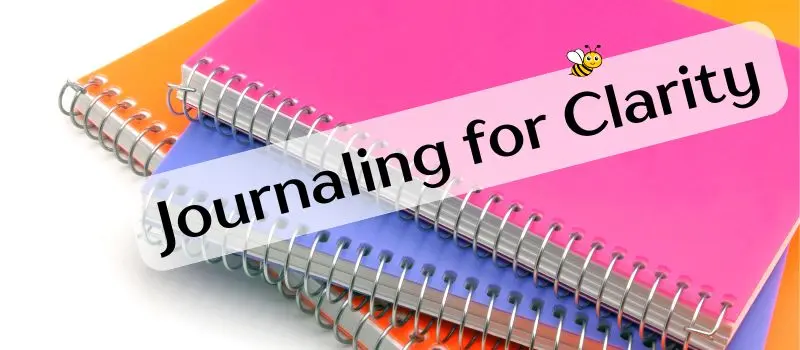
Best used for:
- Planning or organizing tasks
- Noticing patterns or mental loops
- Moving from confusion to a next step
Quick Journaling Prompts:
- What is the main problem in one sentence?
- What result would make this week better?
- Given what I know now, what is one right next step? Write for three minutes, as fast as possible.
A Step by Step Beginner’s Guide
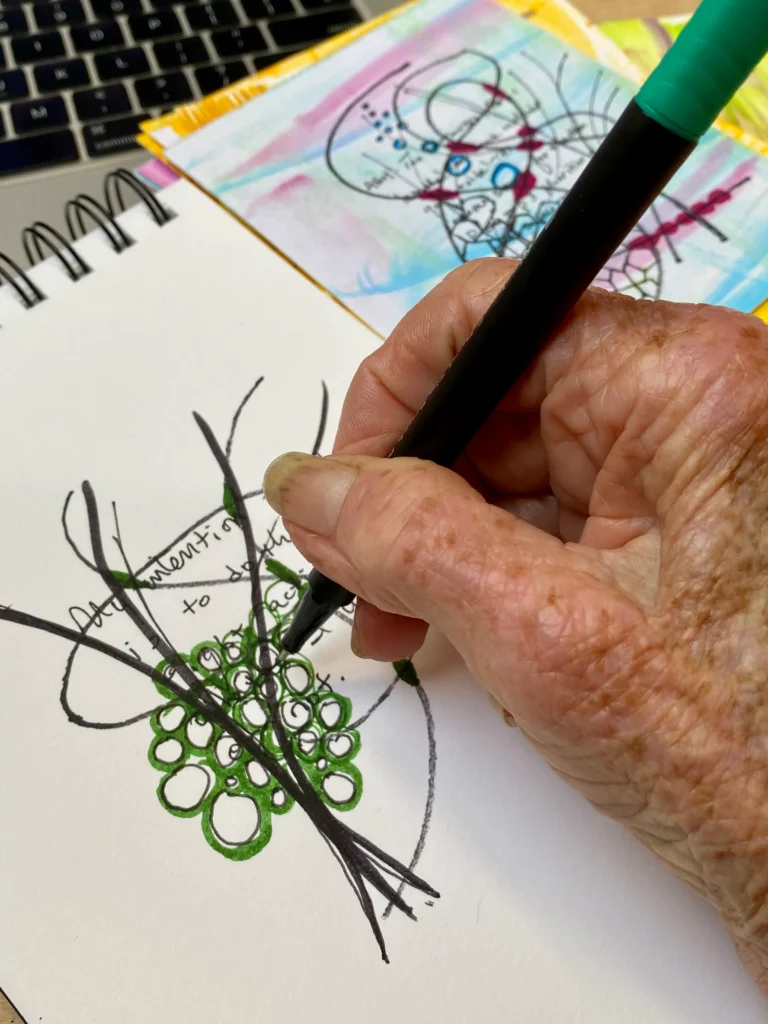
Choosing Between Drawing and Writing
| Situation | Best Tool |
|---|---|
| Body feels tense or stressed | Neurographic art |
| Thoughts are steady but unclear | Journaling |
| Stuck on a yes/no decision | Draw for 2 minutes, then journal for 3 |
On our last live call we talked about the beauty of tossing a coin! The thing is a good rule of Thumb is calm the body first, then decide with words.
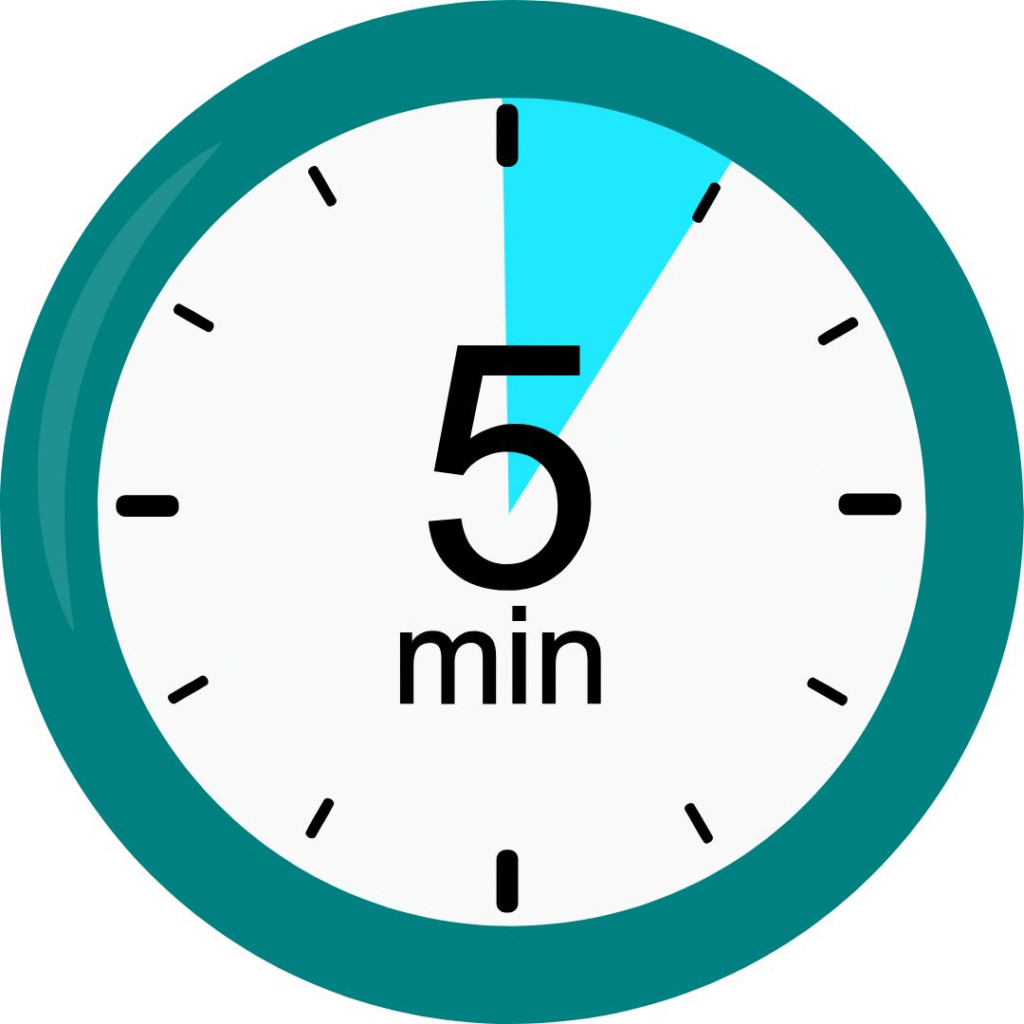
5-Minute Reset Routine
For busy, chaotic days, use this quick combo:
- Breathe: In for 4 seconds, hold breath for 7 contents, breath out for 8 seconds (1 min).
- Neurographic art: Draw lines and round the corners (2 min).
- Journaling: Answer these questions (2 min):
What feels clear now?
- What is one action I can take today?
- Put that action on your calendar before moving on.
Neurographic Art Tips
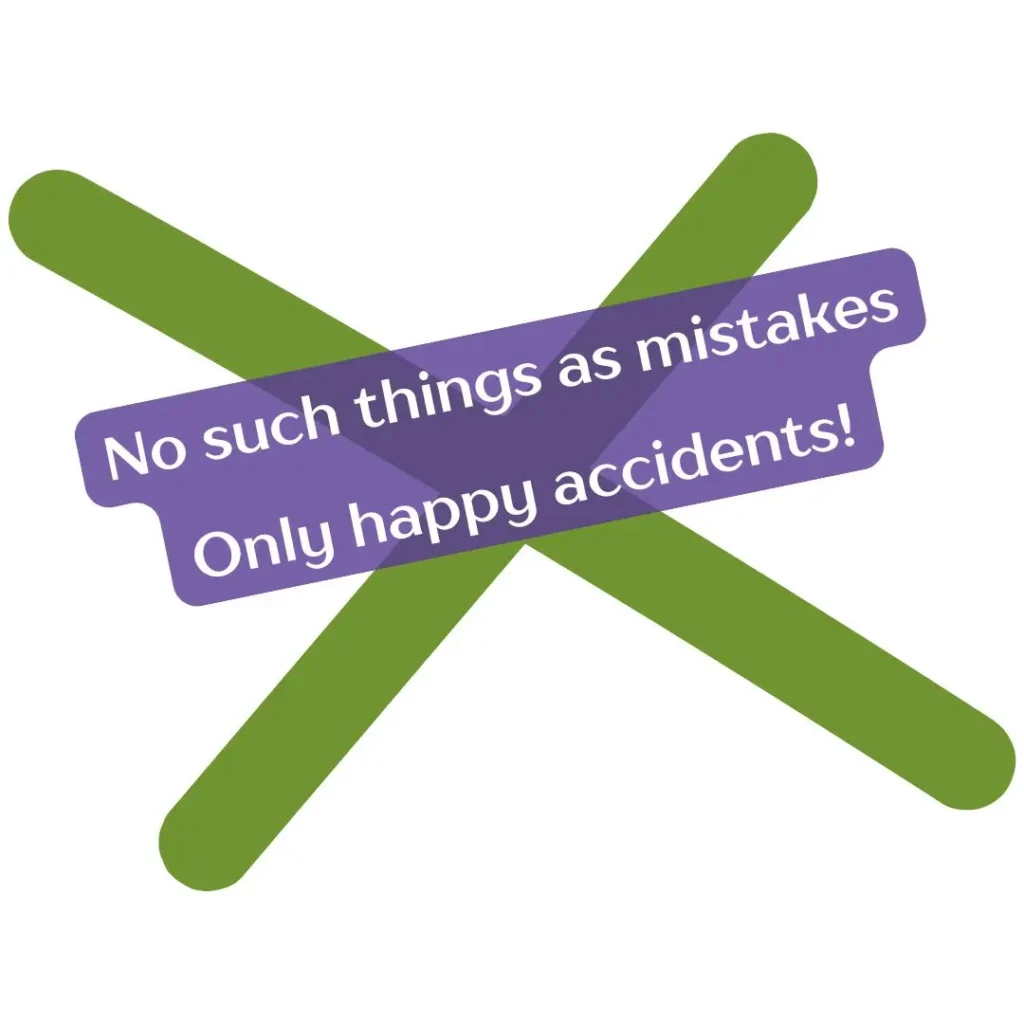
- Don’t try “real art”: Focus on the process, not the result.
- Let go of perfectionism: This is not a report. Just empty your mind.
- Take the few minutes to practice – borrow this time from another place if you must, like scrolling and streaming: Five minutes is enough.
- Do not skip the rounding step in drawing: This is the main relaxing action.
Neurographic Art | Practical Application
If you are working and faced with writing and sending a tough email. Pick up a pen and paper and draw some lines, write a few words, or try both.
We are faced with making many daily decisions, we may not be aware of the most of the decisions we make until we get to the tougher ones.
Drawing some lines or writing a pros and cons list can help enormously. Making tough decision can twist us up in knots. Draw a few curvy lines first, let the lines meander and intersect. Round the sharp intersection. Then list the pros and cons.
FAQ
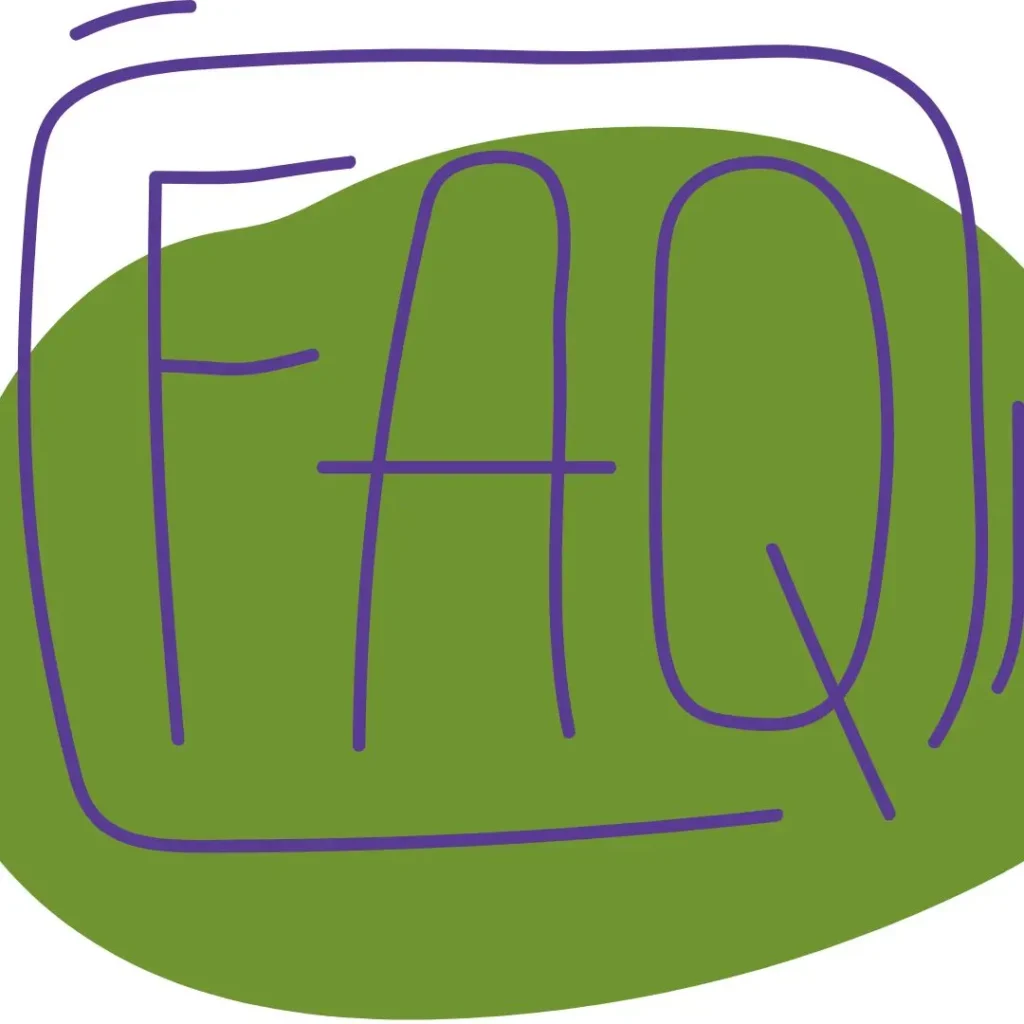
Do I need to know how to draw?
No. Neurographic art is not about making something beautiful. Imperfect lines work best to calm your mind.
Can I do this in my daily planner?
Absolutely! I do a quick morning practice in a dedicated sketchpad.
What if I only have a few minutes?
Use five minutes to complete both drawing and writing. Short sessions build a habit faster than waiting for free time. Don’t want to spend 5 minutes? Spend 2 minutes!
Will this still work even if nothing happens at first?
Yes. Each session helps you practice focus. some people see results immediately and others after a few practices.
I feel self-conscious about writing or drawing. Does it matter?
No. No one else needs to see your page. The goal is less stress, not perfect results. This exercise is for you.
One of the reasons I created the combination of writing a few words and drawing on top of your thoughts is because the words will be hidden to prying eyes.
How often should I use these tools?
I practice as close to daily as possible. Like everything – the more you practice the better you will be at anything.
Daily practice helps most, but even one session can reduce stress and improve clarity. A common refrain in my live workshops is ‘I feel so much calmer’.

Marj Bates has spent years practicing and helping people clear both mental and physical clutter. A lifelong artist and peace-seeker, she weaves together neurographic art, The Artist’s Way, other time-tested practices, and her own story into one gentle space: The MindSketch Lab.
Bring your stuckness, your unsettled mind, and a sketch pad.
Learn to quiet the noise, soften the fear, and release what’s holding you back.
No art skills required—promise.
Art journal your way to clarity with us in our safe and private community, MindSketch Lab on Facebook
